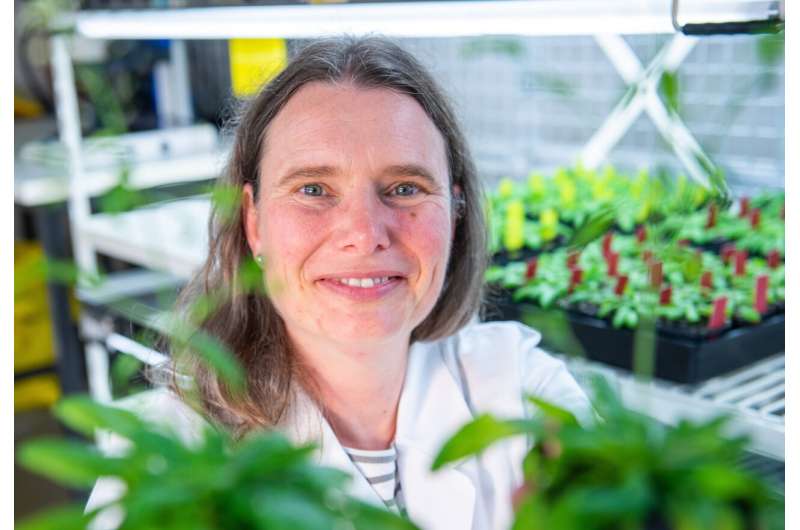Plant nutrient detector breakthrough

Findings from La Trobe University-led research could lead to less fertiliser wastage, saving millions of dollars for Australian farmers.
The international research team has uncovered a protein that can sense vital phosphorus levels—the 'fuel in the tank' - in plants and then adjust growth and flowering in response.
Published in the journal Plant Physiology, the findings provide a deeper understanding of the mechanisms whereby plants sense how much and when to take in the essential nutrient, phosphorus, for optimal growth.
Lead author Dr. Ricarda Jost, from the Department of Plant, Animal and Soil Sciences at La Trobe University said the environmental and economic benefits to farmers could be significant.
"In countries like Australia where soils are phosphorus poor, farmers are using large amounts of expensive, non-renewable phosphorus fertiliser, such as superphosphate or diammonium phosphate (DAP), much of which is not being taken up effectively by crops at the right time for growth," Dr. Jost said.
"Our findings have shown that a protein called SPX4 senses the nutrient status—the 'amount of fuel in the tank' of a crop—and alters gene regulation to either switch off or turn on phosphorus acquisition, and to alter growth and flowering time."
Using Arabidopsis thaliana (thale or mouse-ear cress) shoots, the research team conducted genetic testing by adding phosphorus fertiliser and observing the behaviour of the protein.
For the first time, the SPX4 protein was observed to have both a negative and a positive regulatory effect on phosphorus take-up and resulting plant growth.
"The protein senses when the plant has taken in enough phosphorus and tells the roots to stop taking it up," Dr. Jost said. "If the fuel pump is turned off too early, this can limit plant growth.
"On the other hand, SPX4 seems to have a 'moonlighting' activity and can activate beneficial processes of crop development such as initiation of flowering and seed production."
This greater understanding of how SPX4 operates could lead to a more precise identification of the genes it regulates, and an opportunity to control the protein's activity using genetic intervention—switching on the positive and switching off the negative responses.
La Trobe agronomist Dr. James Hunt said the research findings sit well with the necessity for Australian farmers' to be as efficient as possible with costly fertiliser inputs.
"In our no-till cropping systems, phosphorous gets stratified in the top layers of soil. When this layer gets dry, crops cannot access these reserves and enter what we a call a phosphorus drought," Dr. Hunt said.
"The phosphorous is there, but crops can't access it in the dry soil. If we could manipulate crop species to take up more phosphorous when the top soil is wet, we'd be putting more fuel in the tank for later crop growth when the top soil dries out."
The research team will now be investigating in more detail how SPX4 interacts with gene regulators around plant development and controlling flowering time.
More information: Marina Borges Osorio et al, SPX4 Acts on PHR1-Dependent and -Independent Regulation of Shoot Phosphorus Status in Arabidopsis, Plant Physiology (2019). DOI: 10.1104/pp.18.00594
Provided by La Trobe University





















